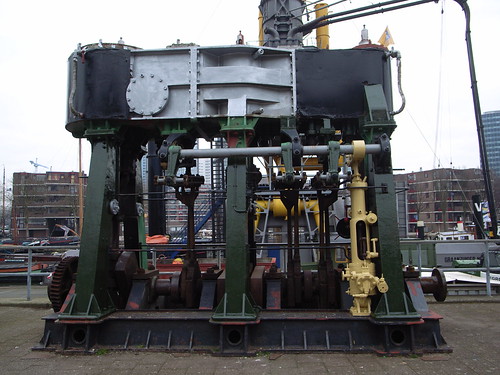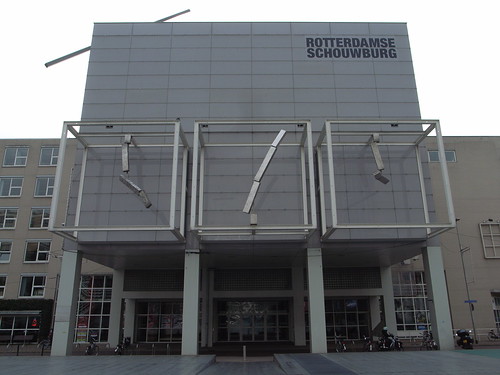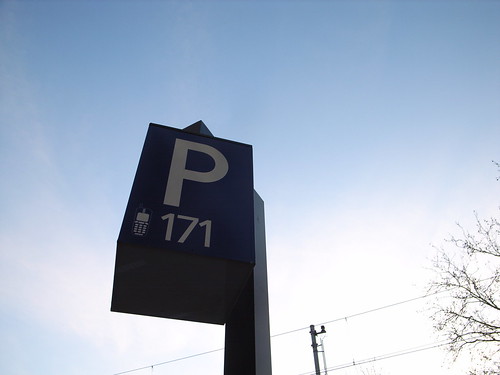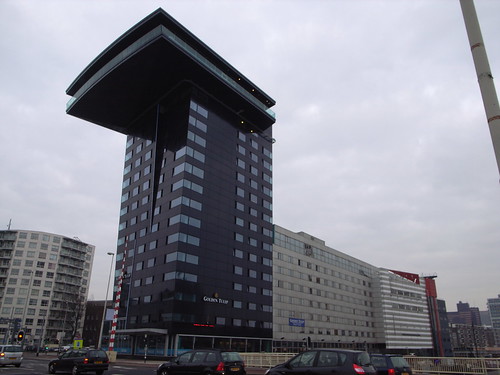Having spend few days in Rotterdam makes me realize how this European city was a very interesting example of how the spatial environment can show heavily-visible signs of mechanical and electronic processes. And this, with different levels of interaction with regards to whom (or what) can influence this process. Let's pick up son pictures from my urban safari to illustrate this.
Given its geographical location, Rotterdam has a big port. Therefore, you have plenty of devices that are related to how a port process material. Cranes for example are omnipresent but other devices are just remnants of past activities (and machinery to activate them)
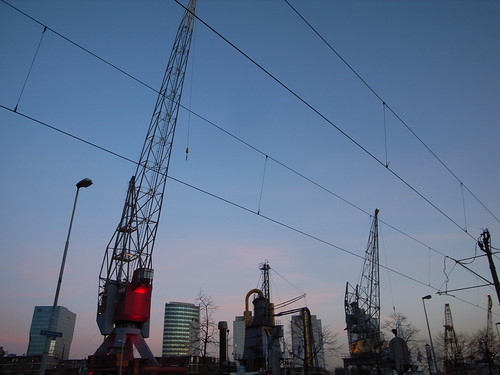
Still in terms of mechanics, bridges can be moved above canals (as in other cities in the Netherlands) and automation seems to be pervasive as indicated by those signs:
But the environment can also be responsive, as attested by these red crane-like objects on Schouwburgplein square. Designed by West8, theses hydraulic cranes can be controlled by a panel situated on the square so that anyone can set the position of the light.
Of course, this is also reflected in the architecture through very classical ambient displays such as the cladding of Renzo Piano's building for KPN Telecom. It acts as a giant billboard that displays patterns that change throughout the day.
Back on Schouwburgplein square, very curious clock-like shapes are adopting dancing patterns in a somewhat ambient display-like ballet:
At the individual level, there are also lots of examples of spaces from everyday life that becomes reliant on software (sort of what Kitchin and Dodge refer to as "code/space"). See for instance, the use of chipkaart (metro pass), the omnipresence of chipknip or how the inhabitants can use their cell-phone to deal with parking lots:
That is even more intriguing when you encounters buildings whose shape adopt the form of machinery:
Why do I blog this? To some extent, I've been amazed by how wandering around in the city gave a feeling of "urban computing" at the lower level sense. As if there was some background sense of systems operating implicitly, quietly in a sort of ballet of movements and displays more or less controlled by the inhabitants. IMHO, it definitely exemplify the city as a dynamic process with changing shapes. My examples are of course not exhaustive, and some of them can also be found elsewhere but the combinations there seemed to be utterly explicit.
In addition, beyond "urban computing" notion such as location-based services or touch-interactions, it's rather when I encounter street signage about "automation" that I feel the digital city.
